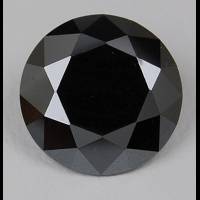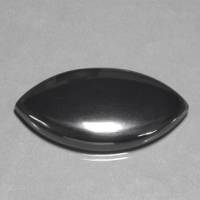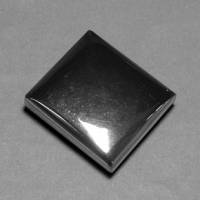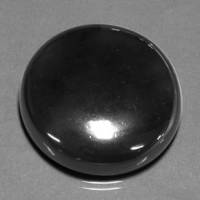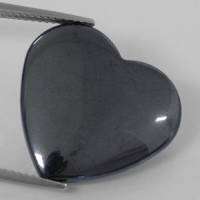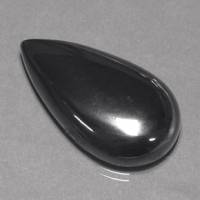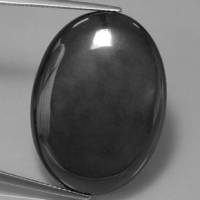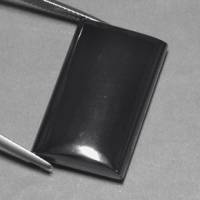Hematite
The name hematite (Greek - blood) is derived from the fact that, when cut, the saw coolant becomes coloured red. Hematite can be in reddish brown, ocherous masses, dark silvery-grey scaled masses, silvery-grey crystals, and dark-grey masses.
Formerly used as mourning jewelry, but today mainly for rings, bead necklaces and intaglio (deepened engravings). It takes a very high polish.
Formerly used as mourning jewelry, but today mainly for rings, bead necklaces and intaglio (deepened engravings). It takes a very high polish.
Hematite Gemstones by Colour
This table shows the variety of hues this gemstone can be found in. Click on a photo for more information.
Hematite Gemstones by Size
This table shows distribution of Hematite gemstone sizes that are listed on this site. This can give a good indication as to the general availability of this gemstone in different sizes.
Contributed photos
Lightest:12.08 cts
Heaviest:57.22 cts
Average:39.71 cts
Total photos:10
Do you have a larger Hematite? Why not upload a photo?
| General Information | ||||||||||||
|---|---|---|---|---|---|---|---|---|---|---|---|---|
| Other Names/Trade Names: | ||||||||||||
| Chemical Formula |
| |||||||||||
| Hematite Simulants | ||||||||||||
| Hematine is a trade name for an imitation of hematite with pressed and sintered iron oxide, from the USA. In contrast to hematite, it is slightly magnetic. - Gemstones of the world, Walter Schumann, 2001, p 162 | ||||||||||||
| Physical Properties of Hematite | ||||||||||||
| Mohs Hardness | 6, Blue Chart Gem Identification (2010) More from other references | |||||||||||
| Specific Gravity | 5.00 to 5.30, Blue Chart Gem Identification (2010) More from other references | |||||||||||
| Tenacity | Brittle,Elastic, Handbook of mineralogy (2001) Brittle, elastic in thin laminae. | |||||||||||
| Cleavage Quality | None, Gemstones of the world (2001) More from other references | |||||||||||
| Fracture | Uneven,Conchoidal, Gemstones of the world (2001) More from other references | |||||||||||
| Optical Properties of Hematite | ||||||||||||
| Refractive Index | 2.690 to 3.220, Blue Chart Gem Identification (2010) More from other references | |||||||||||
| Optical Character | Uniaxial/-, Blue Chart Gem Identification (2010) More from other references | |||||||||||
| Birefringence | 0.280, Blue Chart Gem Identification (2010) More from other references | |||||||||||
| Pleochroism | Brownish red - yellowish red., Handbook of mineralogy (2001) More from other references | |||||||||||
| Dispersion | Very strong, Handbook of mineralogy (2001) More from other references | |||||||||||
| Colour | ||||||||||||
| Colour (General) | Black, steel gray, partly reddish, Gemmological Tables (2004) More from other references | |||||||||||
| Transparency | Opaque, Blue Chart Gem Identification (2010) More from other references | |||||||||||
| Lustre | Metallic, Blue Chart Gem Identification (2010) More from other references | |||||||||||
| Fluorescence & other light emissions | ||||||||||||
| Fluorescence (General) | None, Gemstones of the world (2001) | |||||||||||
| Crystallography of Hematite | ||||||||||||
| Crystal System | Trigonal, Blue Chart Gem Identification (2010) More from other references | |||||||||||
| Habit | Crystals complex rhombohedral, pseudocubic, prismatic, rarely scalenohedral, to 13 cm, with triangular striations; thin tabular, to micaceous or platy, commonly in rosettes; radiating fibrous, reniform, botryoidal or stalactitic masses, columnar; earthy, granular, oolitic, concretionary., Handbook of mineralogy (2001) More from other references | |||||||||||
| Geological Environment | ||||||||||||
| Where found: | An accessory mineral in felsic igneous rocks, a late-stage sublimate in volcanic rocks, and in high-temperature hydrothermal veins. A product of contact metamorphism and in metamorphosed banded iron formations. A common cement in sedimentary rocks and a major constituent in oolitic iron formations. Abundant on weathered iron-bearing minerals., Handbook of mineralogy (2001) | |||||||||||
| Further Information | ||||||||||||
| Mineral information: | Hematite information at mindat.org | |||||||||||
| Significant Gem Localities | ||||||||||||
| ||||||||||||

